When it comes to sports cars, there’s a fascinating divide between the classic beauties of the past and the slick machines of today. Classic sports cars are all about nostalgia and timeless design, while modern models focus on performance, technology, and efficiency. In this journey through the world of sports cars, we’ll explore the charm of vintage rides and the thrills of contemporary speedsters, highlighting what makes each unique and appealing in their own right.
Innovations in Modern Sports Car Technology
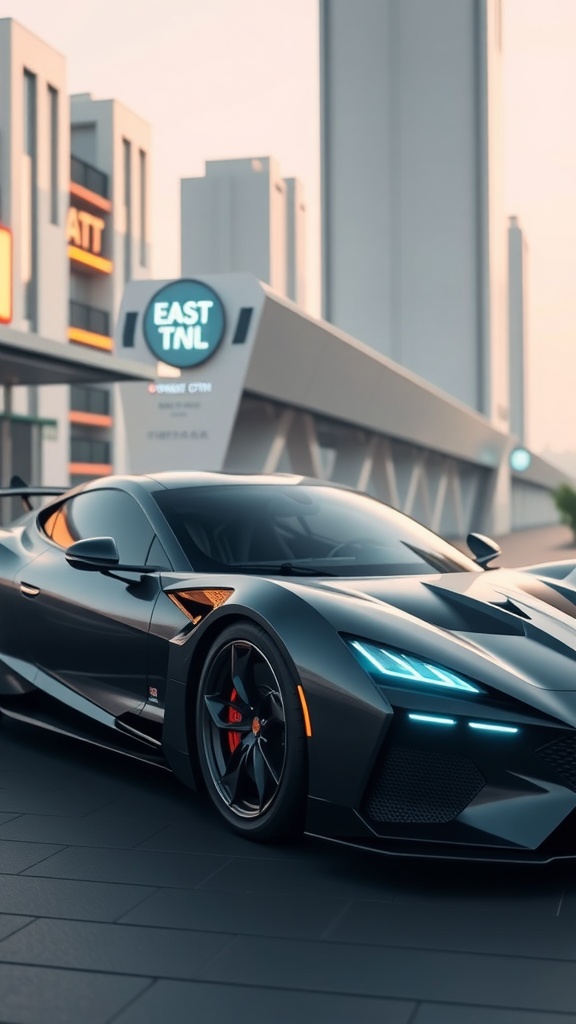
Modern sports cars are truly a sight to behold, much like the sleek vehicle captured in the image. With a striking design and bold features, this car represents the pinnacle of automotive engineering today.
One of the standout innovations in modern sports cars is the use of lightweight materials. Manufacturers are increasingly using carbon fiber and aluminum to reduce weight without sacrificing strength. This shift allows for better performance and efficiency on the road.
Another key area of advancement is in the realm of technology. Many modern sports cars come equipped with advanced driver-assistance systems, which enhance safety and handling. Features like adaptive cruise control and lane-keeping assist make driving not only more enjoyable but also safer.
The powertrains have also evolved significantly. Many new sports cars are now available with hybrid or electric options. These alternatives not only provide instant torque but can also improve fuel efficiency, marking a shift towards more sustainable driving experiences.
Finally, connectivity plays a huge role in modern sports cars. From infotainment systems to smartphone integration, drivers can enjoy a seamless connection to the digital world while staying focused on the road.
Iconic Models that Defined Eras
![]()
When it comes to sports cars, a few iconic models stand out and shape the landscape of automotive history. The image captures a stunning lineup of classic and modern vehicles, showcasing designs that have defined their eras.
In the foreground, there’s a classic model with a distinct blue hue, representing a time when design was all about elegance and simplicity. This era brought us cars that felt alive, with curves and lines that drew you in. The classic sports cars in the background, with their vibrant reds and sleek finishes, remind us of the raw power and thrill of driving.
On the other hand, modern sports cars offer a different appeal. Sleek, aerodynamic shapes and advanced technology define them. These cars are built for performance, combining style with functionality. The contrasting designs illustrate how far we’ve come in automotive engineering while still celebrating the roots of sports car culture.
Customization Trends: Classic vs Modern
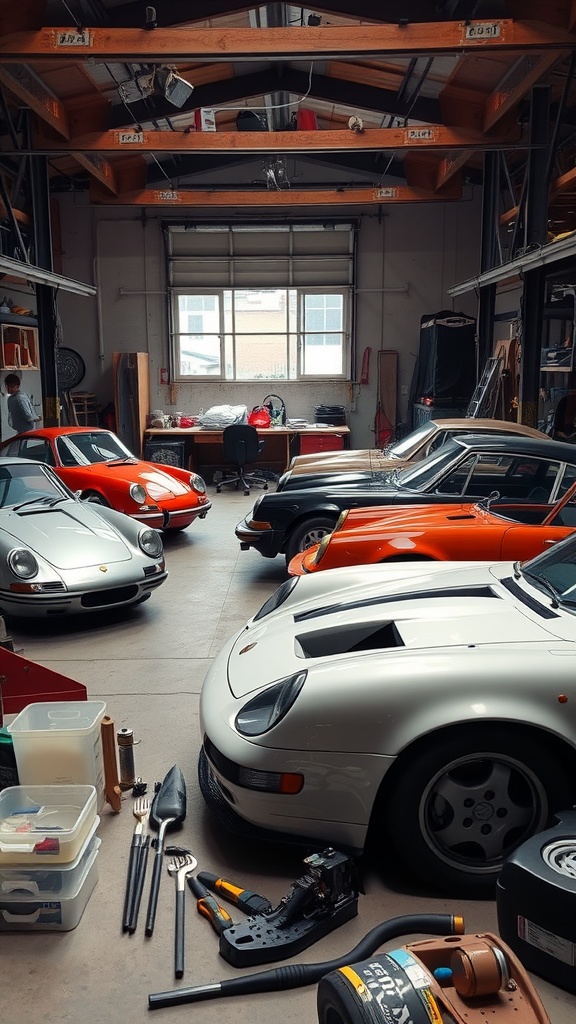
When looking at the workshop filled with classic and modern sports cars, you can really see how customization trends differ between the two. The classic cars, like the vintage Porsche models gathered here, often embrace nostalgia. Owners typically opt for subtle modifications that enhance the car’s original charm while preserving its historical value.
On the other hand, modern sports cars, which also appear in this photo, often allow for bolder customization choices. Owners frequently dive into tech upgrades and performance enhancements. This could mean everything from advanced suspension systems to flashy paint jobs that stand out on the road.
The workshop itself is a testament to this blend of old and new. You can spot various tools and parts that facilitate both kinds of modifications. It’s a hub of creativity where car enthusiasts can express their individuality. Whether it’s a classic car restoration or modern tech upgrades, this space showcases the passion behind customizing vehicles.
Design Philosophy of Classic Sports Cars
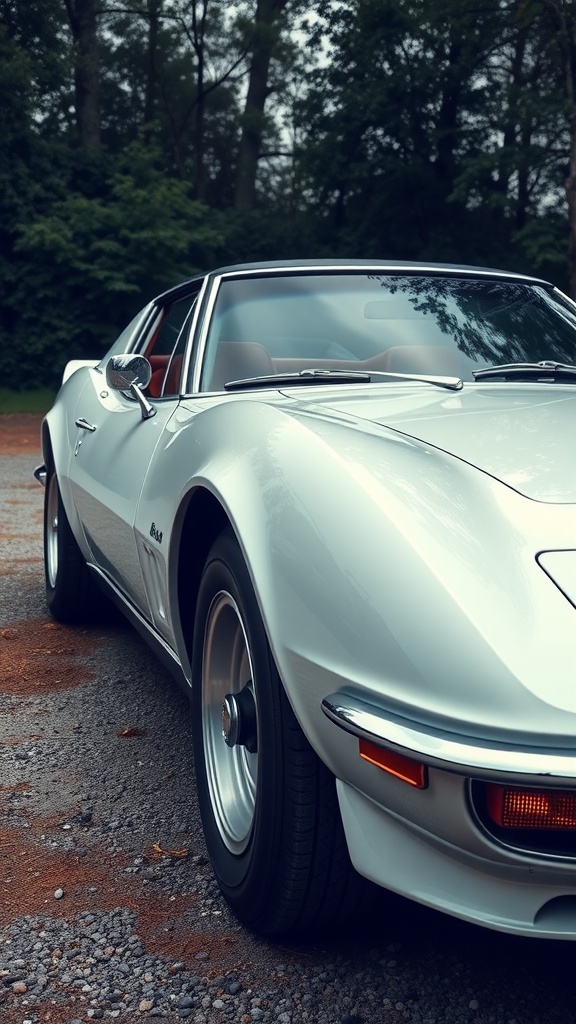
Classic sports cars capture an era where design was all about elegance and distinctiveness. Take, for instance, the car in the image. Its sleek lines and curves tell a story of a time when aesthetics were paramount. Every angle and detail is crafted with intention, showcasing a commitment to beauty and performance.
The design philosophy behind these vehicles often emphasizes simplicity and functionality. The focus is on driver engagement and sensory experience. Unlike modern cars, which may prioritize technology and efficiency, classic sports cars celebrate raw power and the joy of driving.
Moreover, the materials used in classic models, like steel and leather, offer a tactile experience that newer cars sometimes lack. The interior, often rich in texture, invites you to enjoy every moment spent behind the wheel. The craftsmanship in these vehicles reflects a dedication to artistry that resonates with enthusiasts even today.
Ultimately, classic sports cars represent a timeless approach to automotive design. They remind us that sometimes, less is more. The passion that went into their creation can still be felt on the road, making every journey a memorable adventure.
Cultural Impact of Classic Sports Cars
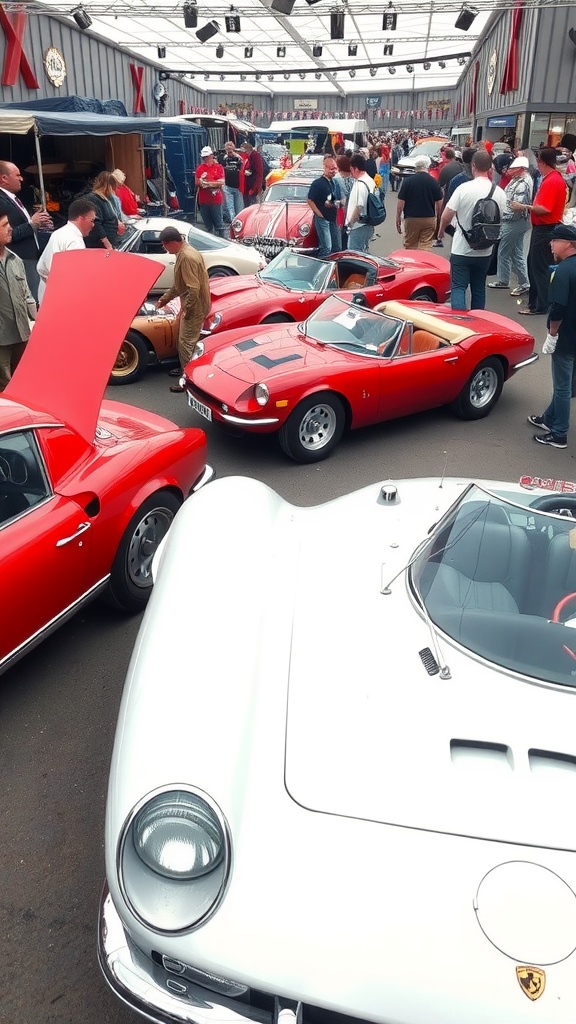
Classic sports cars hold a unique place in our hearts and culture. They are not just machines; they are symbols of freedom, adventure, and style. The image captures a vibrant event filled with enthusiasts gathering around these stunning vehicles, showcasing their love for automotive history.
From the sleek lines of the Ferrari to the iconic curves of the Jaguar, these cars evoke nostalgia and admiration. They remind us of a time when driving was an experience, not just a necessity. Each vehicle tells a story, reflecting the era it was built in and the dreams of its designers.
Moreover, classic sports cars often serve as a bridge between generations. Older enthusiasts share tales of their youth spent racing down open roads, while younger fans appreciate the craftsmanship and engineering that went into these beauties. Car shows and gatherings, like the one in the image, become celebrations of this shared passion.
In films and media, classic sports cars have also left a significant mark. They often symbolize luxury and glamor, making memorable appearances that captivate audiences. The cultural impact of these cars extends beyond just their performance; they influence fashion, music, and lifestyle, shaping trends for decades.
Driving Experience: Feel the Difference

When you slide behind the wheel of a classic sports car, you’re instantly transported to a different era. The image captures a driver enjoying the open road in a vintage red sports car, with mountains stretching out in the background. This scene perfectly illustrates the unique driving experience that classic cars offer.
The absence of modern tech means you’re more in tune with the road. The simple dashboard and manual controls provide a tactile connection that many modern cars lack. You feel every curve and bump, making each drive a thrilling adventure.
On the other hand, modern sports cars bring a different kind of excitement. With advanced features and powerful engines, they deliver incredible speed and precision. The driver might be surrounded by high-tech gadgets and plush interiors, creating a comfortable yet exhilarating experience.
Ultimately, it’s about personal preference. While classic cars offer nostalgia and a raw, engaging drive, modern sports cars provide comfort and performance. It’s like comparing apples and oranges, each offering its own unique flavor on the road.
The Emergence of Electric Sports Cars
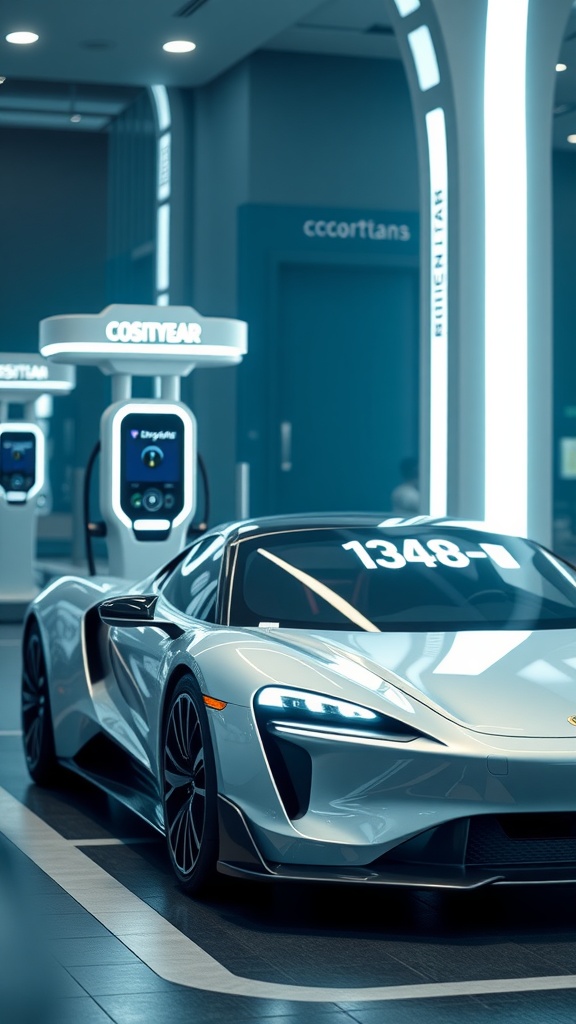
The image shows a sleek, modern electric sports car parked next to a charging station. This setting highlights the shift towards electric vehicles in the sports car market.
Electric sports cars are changing the landscape of performance vehicles. Unlike classic sports cars that rely on gasoline engines, these modern machines use electric power for quick acceleration and impressive torque. The quiet roar of an electric engine is becoming a new standard.
As technology advances, we see more brands stepping into the electric arena. This is not just about being green; it’s also about performance and design. The charging stations in the background are a reminder of the infrastructure supporting this shift. Future car enthusiasts can expect a blend of style and sustainability.
With electric sports cars, we’re witnessing a blend of tradition and modernity. While classic cars have their charm, the new generation brings forth exciting possibilities. The thrill of speed remains, but now it’s wrapped in an eco-friendly package.
Performance Metrics: Classic vs Modern
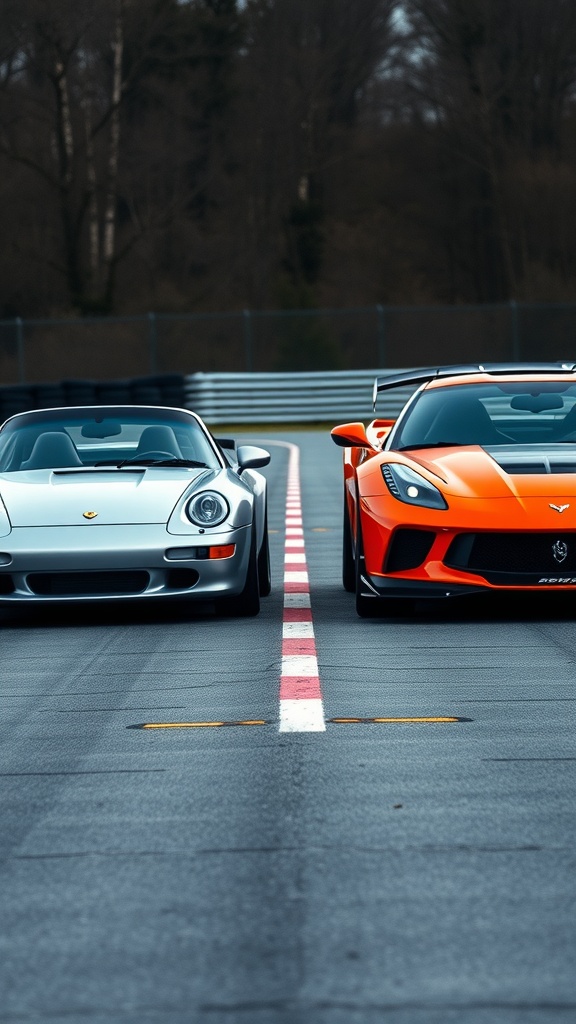
The image captures two iconic sports cars side by side: a classic model on the left and a modern one on the right. This visual comparison highlights the evolution of design and engineering in the automotive world.
Classic sports cars, like the silver one shown, often emphasize simplicity and raw driving experience. They feature mechanical components that, while less advanced than today’s technology, offer a unique connection between the driver and the car. These models are celebrated for their timeless aesthetics and the way they handle on the road, even if they don’t match the speed metrics of their modern counterparts.
On the other hand, modern sports cars, represented by the vibrant orange car, come packed with technology that enhances performance. They boast higher horsepower, advanced aerodynamics, and often include features like traction control and adaptive suspensions. These innovations allow them to achieve impressive acceleration and cornering speeds, which can leave classic models in the dust.
Both types of cars have their merits, catering to different preferences among enthusiasts. While classic cars offer nostalgia and a sense of tradition, modern sports cars provide a thrilling driving experience enhanced by technology.
Future of Sports Cars: Blending Styles
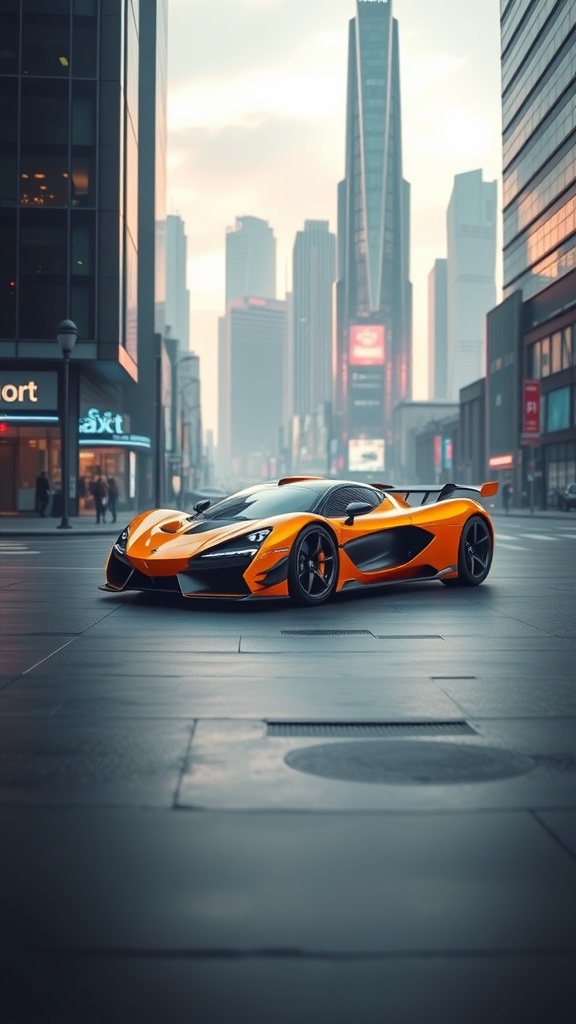
The image presents a striking modern sports car, merging aggressive design with sleek lines. Its bright orange color stands out against the city backdrop, highlighting its sporty character. This reflects the future of sports cars, bringing a blend of modern aesthetics and classic influences.
In recent years, manufacturers have started to play with designs that pay homage to classic models while integrating today’s technology. Cars like the one in the image symbolize this shift, where performance meets eye-catching style. They not only offer speed and agility but also a visual appeal that attracts enthusiasts.
The urban setting emphasizes how these vehicles are not just meant for the racetrack. They’re becoming part of everyday life, showcasing that modern sports cars are designed for both thrill and practicality. As we move forward, we can expect to see even more innovations that combine the charm of classic cars with the advancements of the modern era.
Market Trends: Collectibility of Classic vs Modern
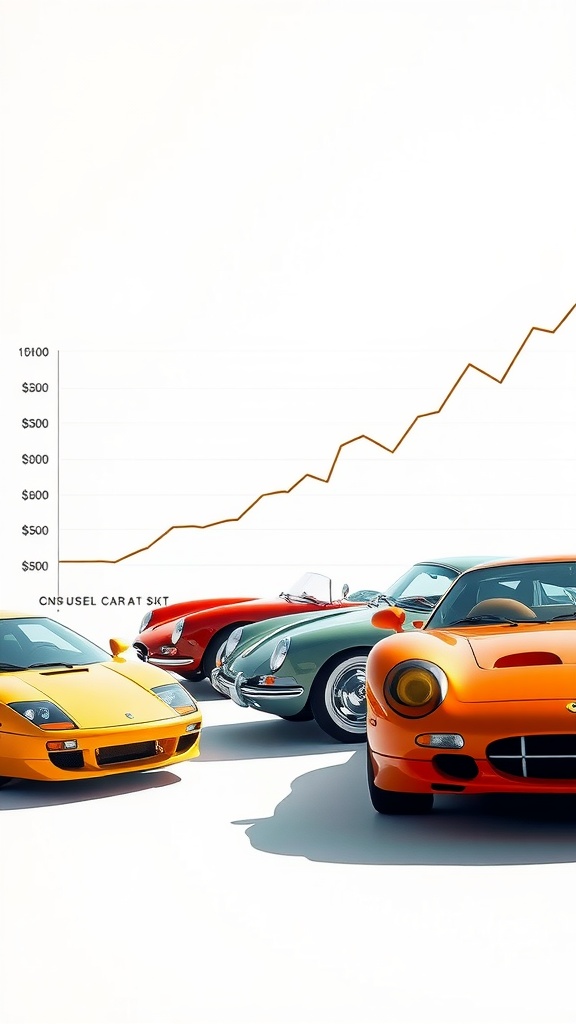
The image showcases a vibrant array of classic and modern sports cars, presenting a visual contrast between the two eras. In the foreground, we see sleek lines and bold colors that embody the heart of automotive design, while the background graph indicates a rising trend in the market for used sports cars.
When we talk about collectibility, classic cars often hold a nostalgic charm that draws enthusiasts. They represent history, craftsmanship, and stories from a different time. Many collectors find joy in restoring these vehicles, preserving their legacy. The gradual rise in their market value, as shown in the graph, reflects this passion.
On the other hand, modern sports cars also carve out their own niche in the market. With advances in technology, they offer features that classic cars simply can’t match. Buyers appreciate the performance, safety, and reliability that newer models bring. The graph hints at an increasing interest in these vehicles, suggesting that modern cars could also become valuable collectibles.
The market for sports cars is shifting, and understanding these trends can help collectors make informed decisions. Whether leaning towards the nostalgic allure of classics or the cutting-edge features of modern models, the love for cars remains a common thread.



